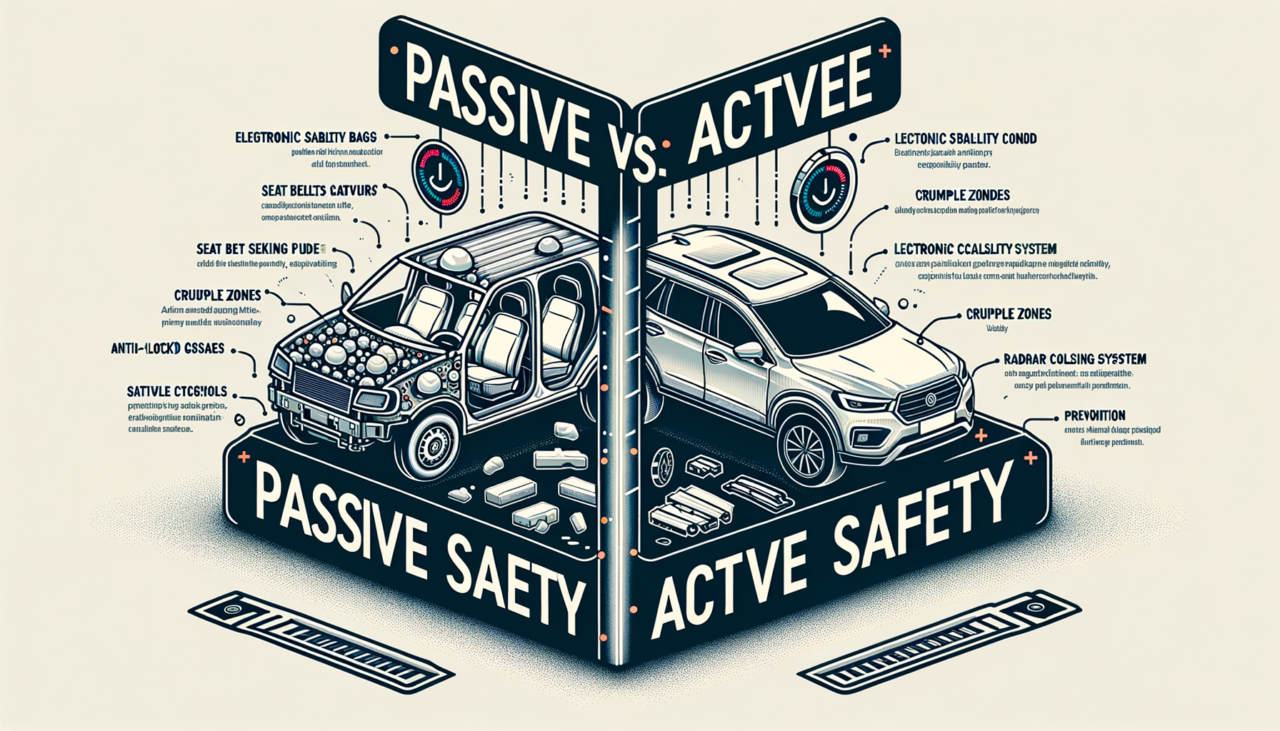In the world of automotive safety, understanding the difference between passive and active safety features is as crucial as knowing the difference between a lion and a goat in the savanna. Just as a lion’s roar and a goat’s bleat serve different purposes, passive and active safety features serve distinct roles in protecting vehicle occupants. Let’s delve into these differences, using the clarity of data storytelling, to make it all as clear as day.
Understanding Safety Features
Passive Safety
Passive safety features are like the trusted umbrella you carry during the rainy season. They are designed to protect occupants during a crash. These features come into play when prevention has failed, and a collision is inevitable. They are your last line of defense, aiming to minimize injury.
Characteristics of Passive Safety:
- Seatbelts: The “iroko tree” of safety features, sturdy and reliable.
- Airbags: Like a mother’s embrace, cushioning and protective.
- Crumple Zones: Designed to absorb impact, these are the “yam barns” that take the blow.
- Safety Glass: The “agbalumo” fruit of windows, designed to shatter safely.
- Child Safety Seats: The “nursing mother” ensuring the little ones are secure.
Active Safety
Active safety features are the watchful sentinels, akin to the wise old tortoise that avoids danger well before it arrives. They are designed to prevent accidents from occurring in the first place, engaging before the point of impact.
Characteristics of Active Safety:
- Anti-lock Braking System (ABS): The “swift antelope,” helping maintain steering control.
- Traction Control: Like the “gecko,” ensuring grip on slippery surfaces.
- Electronic Stability Control (ESC): The “village elder,” keeping the vehicle stable and on course.
- Lane Departure Warning: A “village crier,” alerting you to veer back into your lane.
- Adaptive Cruise Control: The “wise king,” maintaining safe distances on the open road.
Comparative Table: Passive vs. Active Safety
Let’s lay out the main differences in a comparative table to make it as clear as the Lagos sun at noon.
| Feature | Passive Safety | Active Safety |
|---|---|---|
| Functionality | Protects during a crash | Prevents accidents |
| Timing | Activated during impact | Engages before impact |
| Examples | Seatbelts, airbags, crumple zones | ABS, traction control, ESC |
| Technology Level | Mechanical and structural | Electronic and sensor-based |
| Cost Implication | Generally lower initial costs | Higher due to advanced technology |
| User Interaction | Minimal user interaction required | Requires some user awareness (alerts, warnings) |
| Effectiveness | Reduces injury severity | Reduces accident frequency |
Conclusion
In conclusion, both passive and active safety features are vital, like the two sides of a coin. One cannot exist effectively without the other, just as a bird cannot fly with one wing. As technology advances, the fusion of these safety features continues to evolve, making our roads safer for everyone. As the wise Yoruba saying goes, “It takes a whole village to raise a child,” and in this context, it takes a whole array of safety features to protect a driver and passengers.
As you consider the safety of your next vehicle, remember this blend of wit and wisdom. Choose a car that embraces both passive and active safety features, ensuring that the road ahead is as safe as a well-guarded treasure. Whether you’re navigating the bustling streets of Lagos or the serene countryside roads, let these safety features be your trusted companions.

Comments (0)
There are no comments here yet, you can be the first!